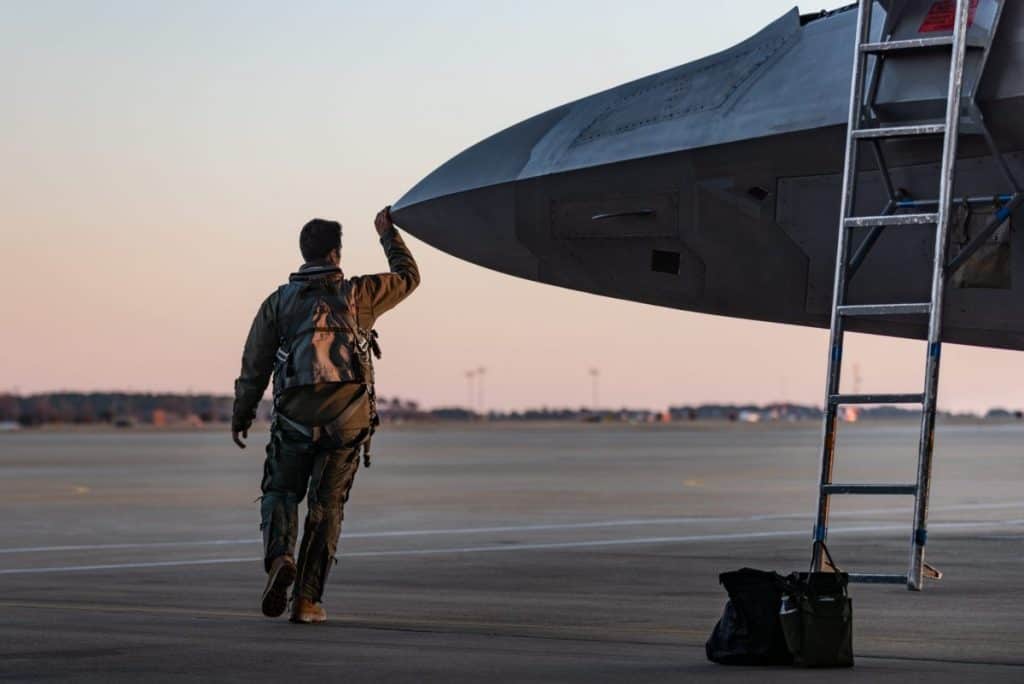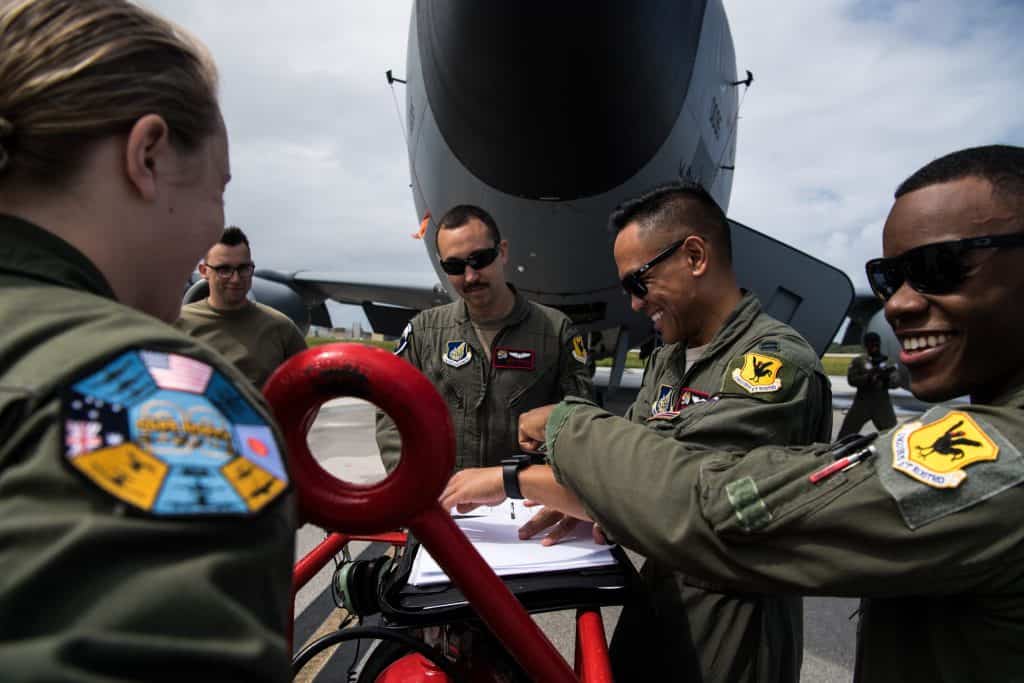Palace Chase and Palace Front Explained

It’s easy to feel trapped as an Active Duty Air Force pilot. With years to go before your Active Duty Service Commitment is up, your family may worry that you’ll never get to leave the ongoing cycle of long workdays broken up by multi-month deployments. For some families, that end can’t come soon enough. Thankfully, the USAF has both an officially-sanctioned shortcut, and a companion that smooths the transition for an on-time separation from Active Duty, codified in their own Air Force Instruction. These programs, called Palace Chase and Palace Front, are perhaps some of the most important policies in the US Air Force. Today we’ll explore what they are and how to employ them to your benefit.
Table of Contents
What are Palace Chase and Palace Front?
There are two ways to make a clean break from Active Duty service in the US Air Force: separation and retirement. An Active Duty retirement is a good deal, and separation makes sense for many non-rated officers who have the option to get out after just 5 years.
However, most of us pilots have given at least 11 years of Active Duty service by the time we’re eligible to consider separating. This is enough of an investment that most of us will at least consider following the Ideal Military Pilot Career Path, if we aren’t already on the Ultimate Military Pilot Career Path. Palace Chase and Palace Front are two official Air Force programs for making the transition from Active Duty to the Air National Guard (ANG) or Air Force Reserve.
Of these two programs, Palace Front (PF) is the simplest and most obvious option. It’s just a way of formalizing the process that switches you from Active Duty to the Guard or Reserve on the day of your separation from Active Duty. The process is straightforward enough that it only occupies a little over 3 of the 45 pages of the regulation that governs these programs (AFI 36-3205). Although PF is technically an “approval” process, there are very few reasons why a PF request would not be granted.
Although PF is a good option for a pilot planning to separate at the end of his or her Active Duty Service Commitment (ADSC), Palace Chase (PC) may be a better deal. This program provides a framework for an officer to leave Active Duty early to join the Guard or Reserve even though he or she still owes time on an ADSC.
Getting out early may sound great, but there's a catch. The Palace Chase program takes your remaining ADSC and triples it for your Guard or Reserve service (e.g. If PC gets you out of Active Duty 6 months early, you now owe the Guard/Reserve 18 months). I remember thinking that this sounded like a lot when I was a young pilot on Active Duty, but if you're going through the PC process, that means you want to continue to serve in the Guard/Reserve anyway. The extra commitment may be inconsequential.
Advantages
I’m not afraid to assert that there is almost nothing an Air Force pilot can do on Active Duty that he or she can’t also get in the Guard or Reserve. Based on that, I believe that every single Active Duty USAF pilot should consider applying for Palace Chase. Leaving Active Duty early comes with many benefits:
- The most important thing that PC does is give you the ability to get hired with a major airline months or even years sooner than you otherwise could. This will affect your family’s Quality of Life for years to come. I cannot emphasize enough the fact that Seniority is Everything!
- Unlike an officer who simply separates and walks away, continuing to serve part-time in the Guard or Reserve (full-time orders are readily available as well) allows you to continue earning military retirement and the associated pension and health care benefits. If you’ve already invested 11 years and if you can enjoy part-time military service, you might as well reap some financial reward from it as well.
- Another big benefit of both PC and PF is that these processes include a step that keeps your security clearance active. If you want to be an airline pilot this isn’t a big deal. However, if you want to do any type of job (flying or non-flying) that involves working for the government, your security clearance is priceless. (Consider, for example, this job as an L-159 pilot for adversary air company Draken International. If nothing else, wouldn’t that be a fun side-hustle?)

The ability to make your transition from Active Duty seamless is a huge advantage. If you’re going to continue serving after you get out, there’s no reason not to apply. At the very least, Palace Front should be an easy answer. However, before we get carried away, let’s cover some of the things you need to watch out for during this process.
Gotchas
The Air Force couldn’t make Palace Chase and Palace Front the good deals they are without adding some caveats that could ruin your day. Although you should read the full Air Force Instruction before applying to the program, here are some of the major restrictions that you have to meet before you apply:
- You must have completed at least ⅔ of your current ADSC. For a 10-year UPT commitment, this means the earliest you could consider applying would be around the 7th year after earning your wings.
- As we mentioned, your commitment to the Guard or Reserve will be triple any portion of your ADSC that gets waived by this program.
- You must be medically worldwide qualified. (This rule makes an exception for pregnant women.) This is a very important point that could cause you a lot of headaches. If you have a medical issue, you should always talk with your doctor about it ASAP. However, if you’re dealing with something that can wait until after you’ve left Active Duty service, you might talk to your Flight Surgeon about waiting to document certain things until after you’ve made your transition. (All the more reason to use Guard or Reserve service to preserve your access to Tricare!)
- You must also be satisfactory on your physical fitness test. This doesn’t seem like it should be such a big deal, but it gets a ridiculous amount of emphasis with the USAF these days. If you think you might want to PC in the near future, make sure you’re working out and passing your annual PT test!
- If you’re overseas and you want your PC/PF date to be the same as your DEROS (Date Estimated to Return from Overseas) then you must submit your application at least 6 months out. Don’t mess around with this one! The PC process tends to get drawn out and the last thing you want to do when pursuing PC is incur a fresh 2- or 3-year ADSC due to accepting a new assignment when you return from overseas.
- You cannot PC if you are in any type of “official” trouble. (The AFI lists a variety of ways you can be in trouble, but if you have a current Unfavorable Information File, or UIF, you’re probably ineligible.) Like the Dos Gringos say, “don’t shake your baby while you drink and drive!”
- This program gets your Active Duty Service Commitment exchanged for a commitment to the Guard or Reserve on the assumption that you will actually find a Guard or Reserve job to do. It’s okay to spend some time in the Participating Irregular Ready Reserve, but unless you find a permanent PIRR job you’ll need to figure out something else. (PIRR is a status where you do unpaid service for points toward retirement. The most common version of this is being an Admission Liaison Officer for the USAF Academy.) The Palace Chase AFI has a whole section on how the USAF will force you back on to Active Duty service if you fail to find a Guard or Reserve job. Luckily, BogiDope exists for the sole purpose of helping you find and land that dream job.
- If your PC application is denied, you have to wait 120 days to reapply, unless your rejection was caused by paperwork/administrative errors. This can complicate the timing of your departure from Active Duty.
- It's possible to get Palace Chase if you're still serving out an obligation related to a bonus, scholarship, tuition assistance, or similar program. However, you'll have to pay back any unearned portion of that money.
Also, the Guard and Reserve sometimes have signing or pilot retention bonuses. When you use Palace Chase and transfer ADSC to the Guard or Reserve, it will probably make you ineligible for any bonuses. Be sure to talk to both a Reserve Recruiter and the pilots at your gaining unit to help sort that out. It's possible that you'll be able to sign a pilot retention bonus after you've served out your remaining time.
If you are dead-set on getting that bonus, you should plan to serve out your ADSC and just use Palace Front to transfer to the Guard or Reserve, instead of using Palace Chase to leave Active Duty early.
I assert that this last point should not be a major consideration if you intend on ending up at a major airline. We've looked at major airline pay, and it's fantastic. If you honestly run the math, I suspect you'll find that even a $25K-$35K per year pilot bonus in the Guard or Reserve is chump change compared to the end of career airline pilot pay you'd be giving up by delaying your departure from Active Duty.
As long as you can account for these restrictions, the next step in the process is strategizing how and when to submit your application. Sadly, this warrants careful consideration.








